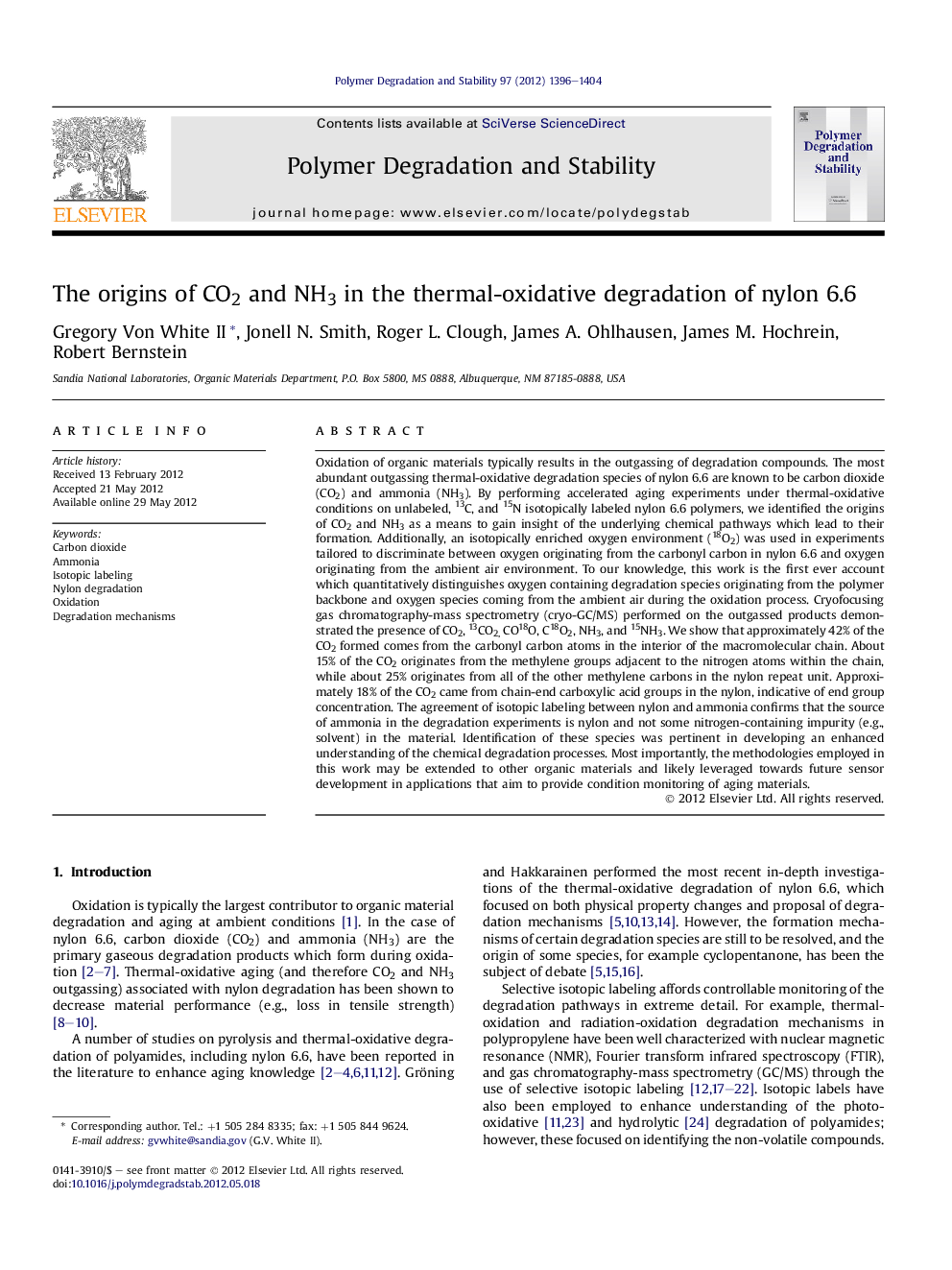| Article ID | Journal | Published Year | Pages | File Type |
|---|---|---|---|---|
| 5202649 | Polymer Degradation and Stability | 2012 | 9 Pages |
Abstract
Oxidation of organic materials typically results in the outgassing of degradation compounds. The most abundant outgassing thermal-oxidative degradation species of nylon 6.6 are known to be carbon dioxide (CO2) and ammonia (NH3). By performing accelerated aging experiments under thermal-oxidative conditions on unlabeled, 13C, and 15N isotopically labeled nylon 6.6 polymers, we identified the origins of CO2 and NH3 as a means to gain insight of the underlying chemical pathways which lead to their formation. Additionally, an isotopically enriched oxygen environment (18O2) was used in experiments tailored to discriminate between oxygen originating from the carbonyl carbon in nylon 6.6 and oxygen originating from the ambient air environment. To our knowledge, this work is the first ever account which quantitatively distinguishes oxygen containing degradation species originating from the polymer backbone and oxygen species coming from the ambient air during the oxidation process. Cryofocusing gas chromatography-mass spectrometry (cryo-GC/MS) performed on the outgassed products demonstrated the presence of CO2, 13CO2, CO18O, C18O2, NH3, and 15NH3. We show that approximately 42% of the CO2 formed comes from the carbonyl carbon atoms in the interior of the macromolecular chain. About 15% of the CO2 originates from the methylene groups adjacent to the nitrogen atoms within the chain, while about 25% originates from all of the other methylene carbons in the nylon repeat unit. Approximately 18% of the CO2 came from chain-end carboxylic acid groups in the nylon, indicative of end group concentration. The agreement of isotopic labeling between nylon and ammonia confirms that the source of ammonia in the degradation experiments is nylon and not some nitrogen-containing impurity (e.g., solvent) in the material. Identification of these species was pertinent in developing an enhanced understanding of the chemical degradation processes. Most importantly, the methodologies employed in this work may be extended to other organic materials and likely leveraged towards future sensor development in applications that aim to provide condition monitoring of aging materials.
Related Topics
Physical Sciences and Engineering
Chemistry
Organic Chemistry
Authors
Gregory Von II, Jonell N. Smith, Roger L. Clough, James A. Ohlhausen, James M. Hochrein, Robert Bernstein,
